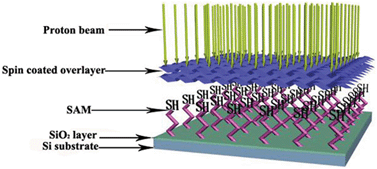Construction of cross-linked polymer films covalently attached on silicon substrate via a self-assembled monolayer†
Abstract
A new synthetic approach was developed to fabricate cross-linked

* Corresponding authors
a
Key Laboratory of Micro–Nano Materials for Energy Storage and Conversion of Henan Province, Institute of Surface Micro and Nano Materials, Xuchang University, Henan Province, China
E-mail:
zhengzhi99999@gmail.com
b Chengdu Green Energy and Green Manufacturing R&D Center, Sichuan, China
c
Department of Physics, The Chinese University of Hong Kong, Shatin, N. T., China
E-mail:
llau22@uwo.ca
A new synthetic approach was developed to fabricate cross-linked

 Please wait while we load your content...
Something went wrong. Try again?
Please wait while we load your content...
Something went wrong. Try again?
Z. Zheng, H. Zhao, W. Fa, W. He, K. Wong, R. W. M. Kwok and W. M. Lau, RSC Adv., 2013, 3, 11580 DOI: 10.1039/C3RA40949J
To request permission to reproduce material from this article, please go to the Copyright Clearance Center request page.
If you are an author contributing to an RSC publication, you do not need to request permission provided correct acknowledgement is given.
If you are the author of this article, you do not need to request permission to reproduce figures and diagrams provided correct acknowledgement is given. If you want to reproduce the whole article in a third-party publication (excluding your thesis/dissertation for which permission is not required) please go to the Copyright Clearance Center request page.
Read more about how to correctly acknowledge RSC content.
 Fetching data from CrossRef.
Fetching data from CrossRef.
This may take some time to load.
Loading related content
